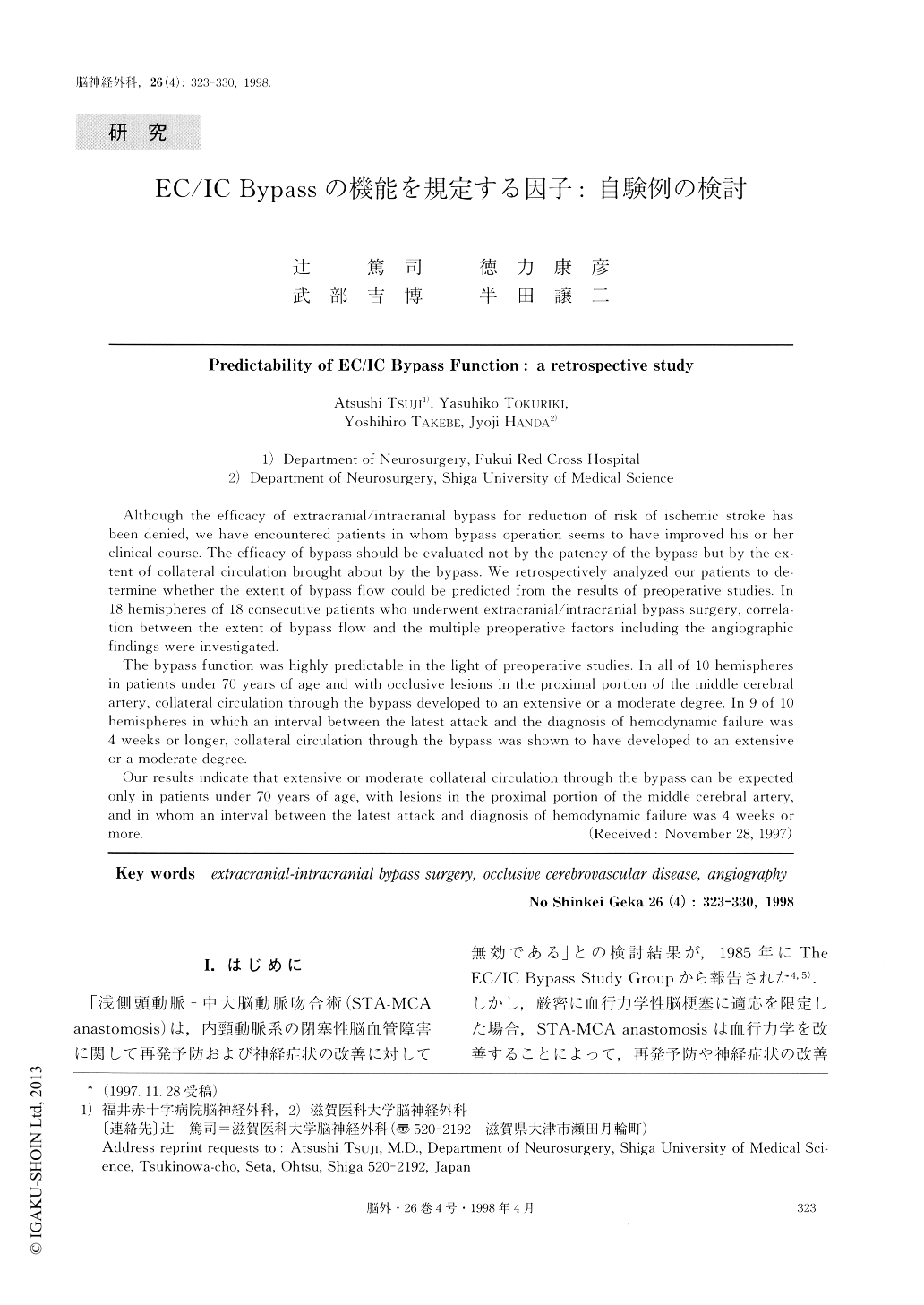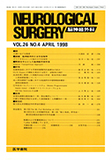Japanese
English
- 有料閲覧
- Abstract 文献概要
- 1ページ目 Look Inside
I.はじめに
「浅側頭動脈—中大脳動脈吻合術(STA-MCAanastomosis)は,内頸動脈系の閉塞性脳血管障害に関して再発予防および神経症状の改善に対して無効である」との検討結果が,1985年にTheEC/IC Bypass Study Groupから報告された4,5).しかし,厳密に血行力学性脳梗塞に適応を限定した場合,STA-MCA anastomosisは血行力学を改善することによって,再発予防や神経症状の改善が期待できるとする,多数のretrospective studyが報告されてきた1,2,7,11,12).一方,血行力学性脳梗塞と診断し,同じSTA-MCA anastomosisを施行しても,術後の吻合血管を介しての血流量には,MCA全域を潅流するものから,吻合した皮質動脈1本のみの領域が潅流されるものまで,その機能には大きな隔たりを経験する7).
本来,STA-MCA anastomosisの有効性とは,虚血発作の予防および虚血症状の改善で評価されるが,われわれは,術後の外頸動脈を介する潅流域の広がりを,術後の吻合血管の機能と仮定し,その機能を左右する術前の要素を,retrospectiveに検討したので報告する.
Although the efficacy of extracranial/intracranial bypass for reduction of risk of ischemic stroke hasbeen denied, we have encountered patients in whom bypass operation seems to have improved his or herclinical course. The efficacy of bypass should be evaluated not by the patency of the bypass but by the ex-tent of collateral circulation brought about by the bypass. We retrospectively analyzed our patients to de-termine whether the extent of bypass flow could be predicted from the results of preoperative studies. In18 hemispheres of 18 consecutive patients who underwent extracranial/intracranial bypass surgery, correla-tion between the extent of bypass flow and the multiple preoperative factors including the angiographicfindings were investigated.
The bypass function was highly predictable in the light of preoperative studies. In all of 10 hemispheresin patients under 70 years of age and with occlusive lesions in the proximal portion of the middle cerebralartery, collateral circulation through the bypass developed to an extensive or a moderate degree. In 9 of 10hemispheres in which an interval between the latest attack and the diagnosis of hemodynamic failure was4 weeks or longer, collateral circulation through the bypass was shown to have developed to an extensiveor a moderate degree.
Our results indicate that extensive or moderate collateral circulation through the bypass can be expectedonly in patients under 70 years of age, with lesions in the proximal portion of the middle cerebral artery,and in whom an interval between the latest attack and diagnosis of hemodynamic failure was 4 weeks ormore.

Copyright © 1998, Igaku-Shoin Ltd. All rights reserved.


